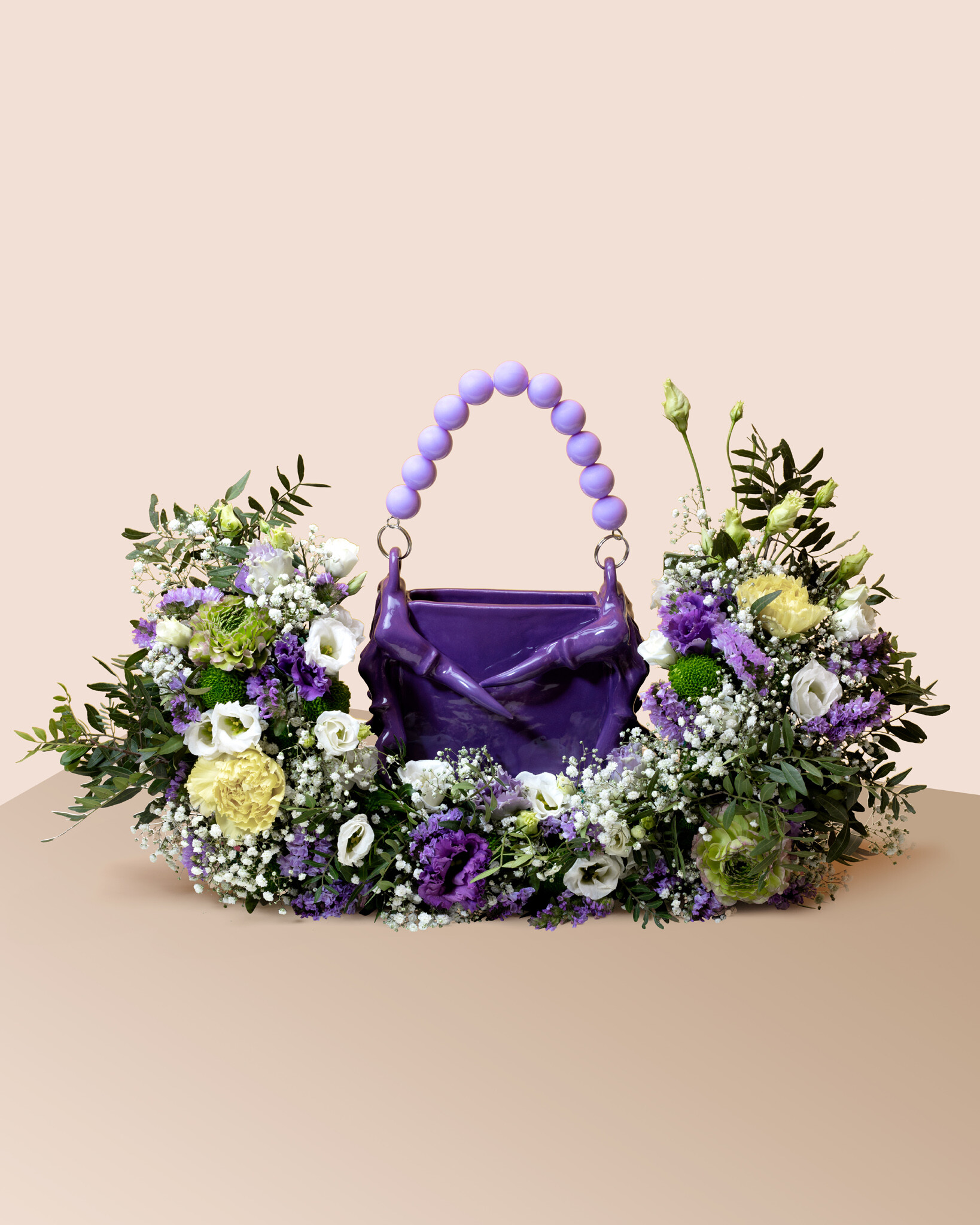
"I'm very inspired by popular culture from a sociological point of view."
Naomi Gilon
Naomi Gilon is a multidisciplinary artist born in Belgium. She gives life to images, everyday objects, handbags, shoes and candleholders in the form of ceramic pieces. In her works, she has fun diverting the concept of beauty to mix it with mythological and horror elements, such as claws.
MAD had a conversation with Naomi Gilon.
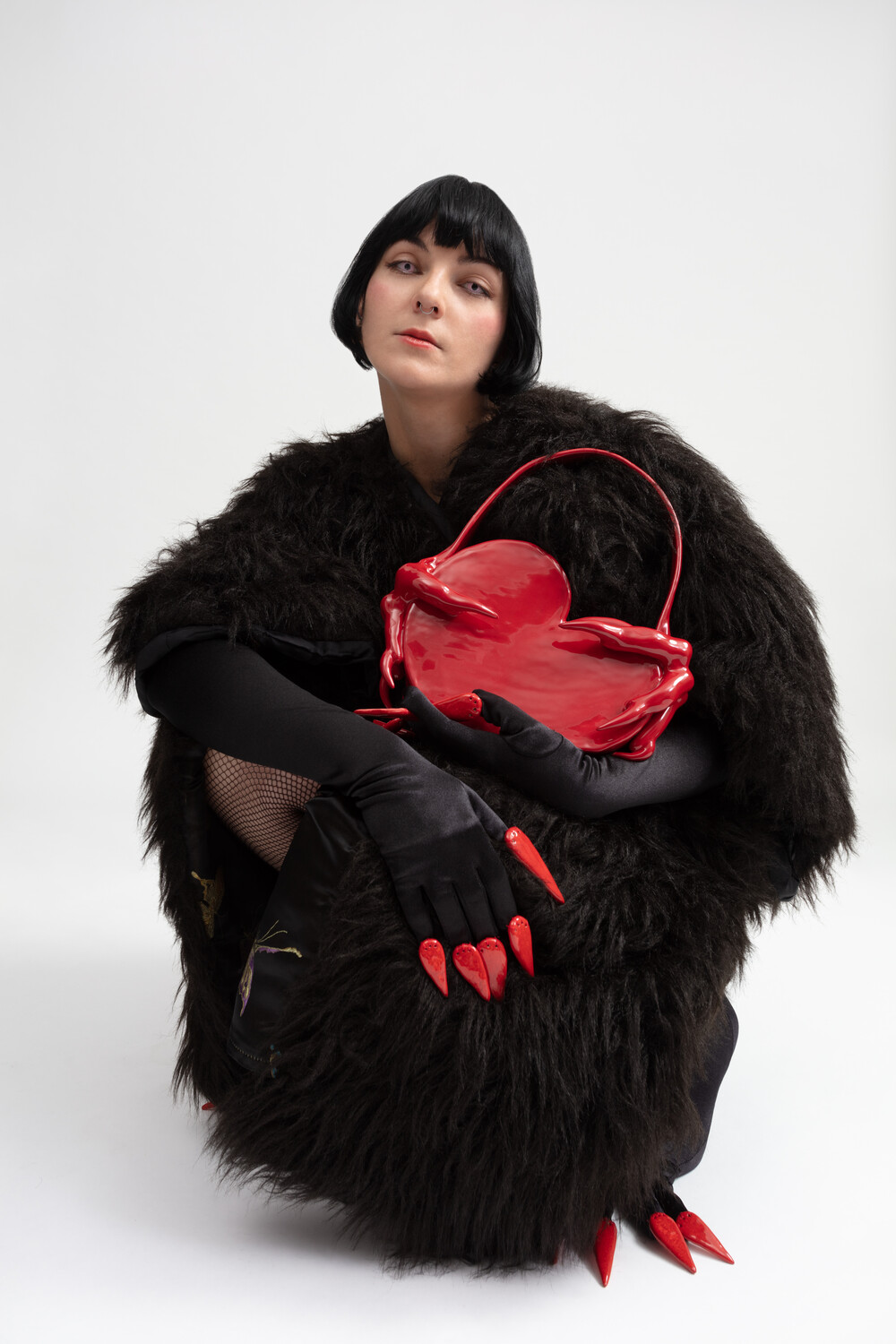
Can you briefly introduce yourself?
"I come from Arlon in Wallonia. I studied painting at La Cambre in Brussels and then moved to my current studio, in Uccle. There was a ceramics workshop there and I was curious to learn this technique. I trained myself by observing the gestures of the creative people in the workshop, their different techniques and methods. I also learned the technique of raku firing."
"I don't paint on canvas any more but the two practices, painting and ceramics, are still quite linked in everything that concerns the research of colour and composition. The basis of my training in painting is still very useful to me today. Even if from a technical point of view it is no longer the same. In painting you use pigments and in ceramics you work with oxides. There is something more chemical. I also work with textiles in my scenographies."
"I do not use plaster moulds. I am always looking to develop my own technique and personality in ceramics, learning new methods. I work with plate or I combine techniques."
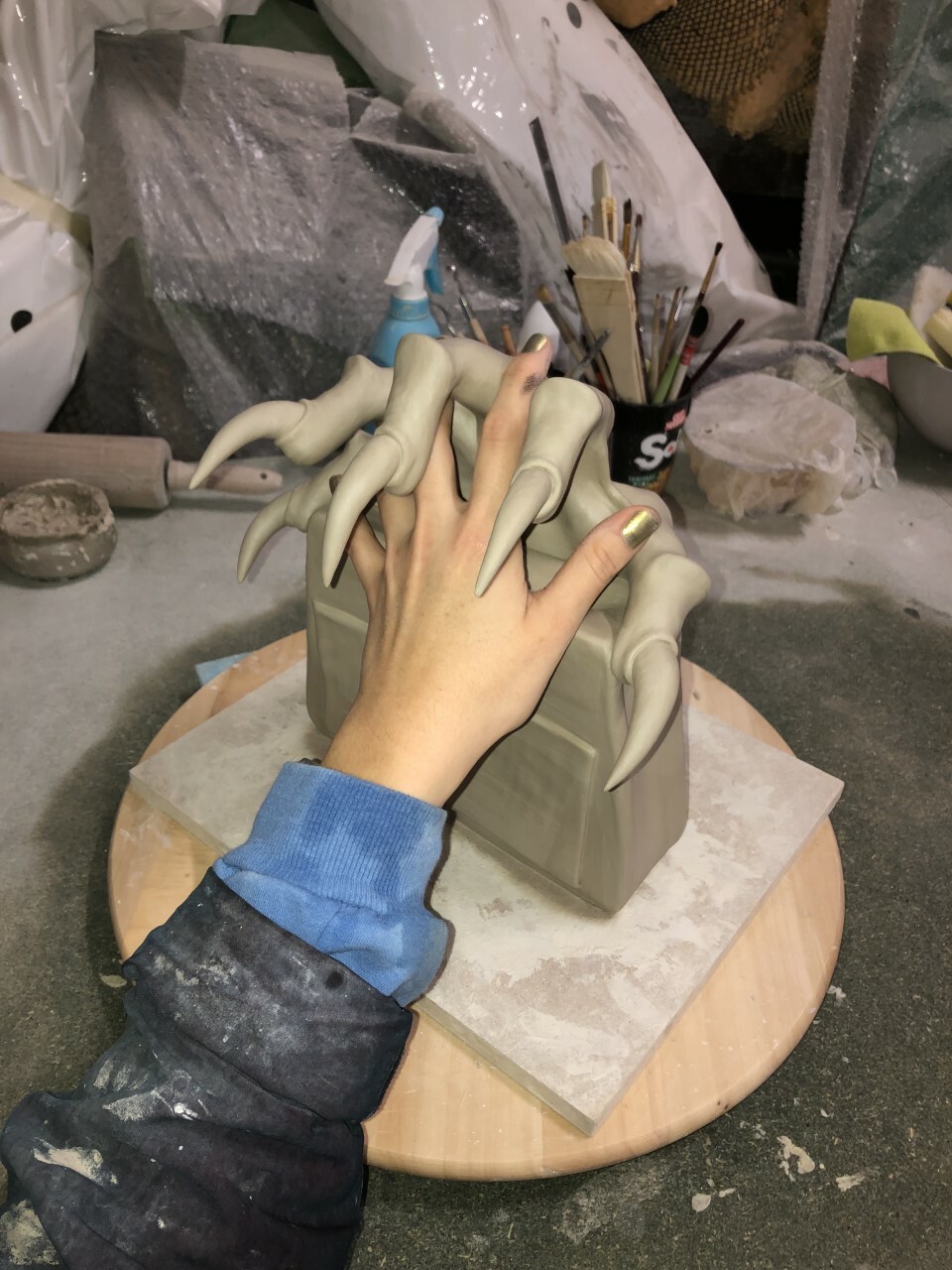
Which pieces will be shown during the Modern Craft exhibition?
"I will be presenting four pieces during the Modern Craft II exhibition. You can see them as from 16 December 2022 at MAD Brussels. There will be a pair of shoes, made as part of the project 'The cow girl'. It's a mix between the western world and my inspiration from the gore and horror culture in cinema. What's interesting about this shoe is that it can really be worn, it's a size 38."
"I also show two bags. I was interested in thinking about the historical connotation of the object. The bags symbolised, for example, the fluctuations of time, crises etc. I linked this to my personal world of monsters and mythological cultures."
"And finally a candleholder: another facet of my work. I create these pieces with the idea that they are accessible pieces, easy to integrate into an interior. It's an everyday object with a fixed price because I think it's important to reduce the border between the art world and galleries and amateurs with a lower budget."
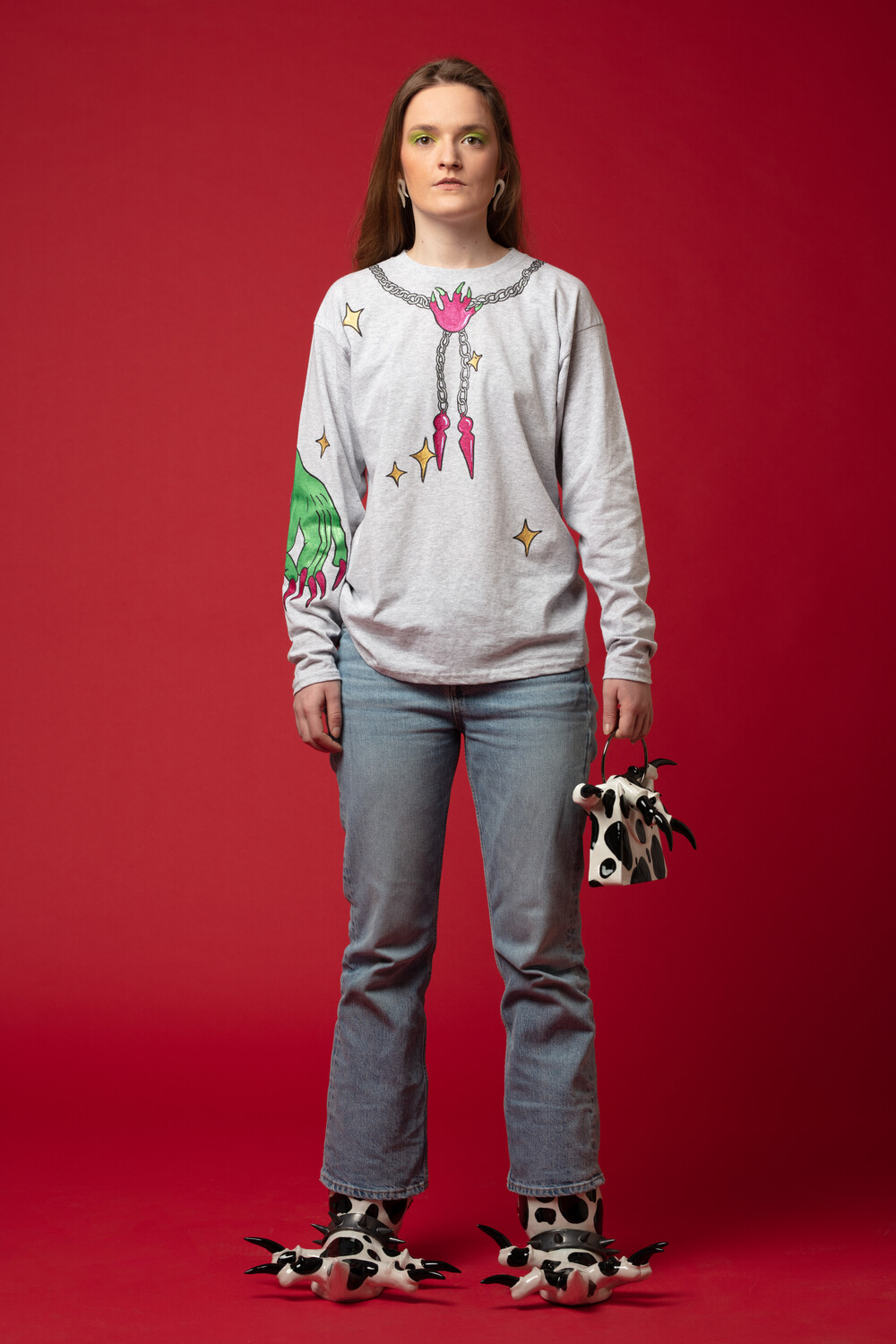
Can you explain your link with ceramics and fashion?
"I like the idea of starting with an art object, an exhibition object, a fixed object and linking it with something totally mouldable, which fits into everyday life, something practical. It is a confrontation between fashion and ceramics. An opposition between the two. It's ceramic so it's necessarily fragile but I like the risk ceramic takes when worn. It is something that is no longer static and that takes on a rhythm, a movement. The piece takes on its full connotation in its relationship with the body of the person who is going to wear it."
"I don't really do research in fashion, but on the one hand there are certain features of fashion that are interesting to export to the contemporary art. When you do research, each fashion accessory has a symbolism. For example, with my ceramic shoes I analysed the role of the shoe from a historical point of view. Initially it was an ornament to represent social status and for many years it was a symbol of suffering."
"Fashion is a chronology, it's a reflection of change, of evolution. In my work I am constantly trying to question different subjects, fashion, the popularisation of things and the impact on people."
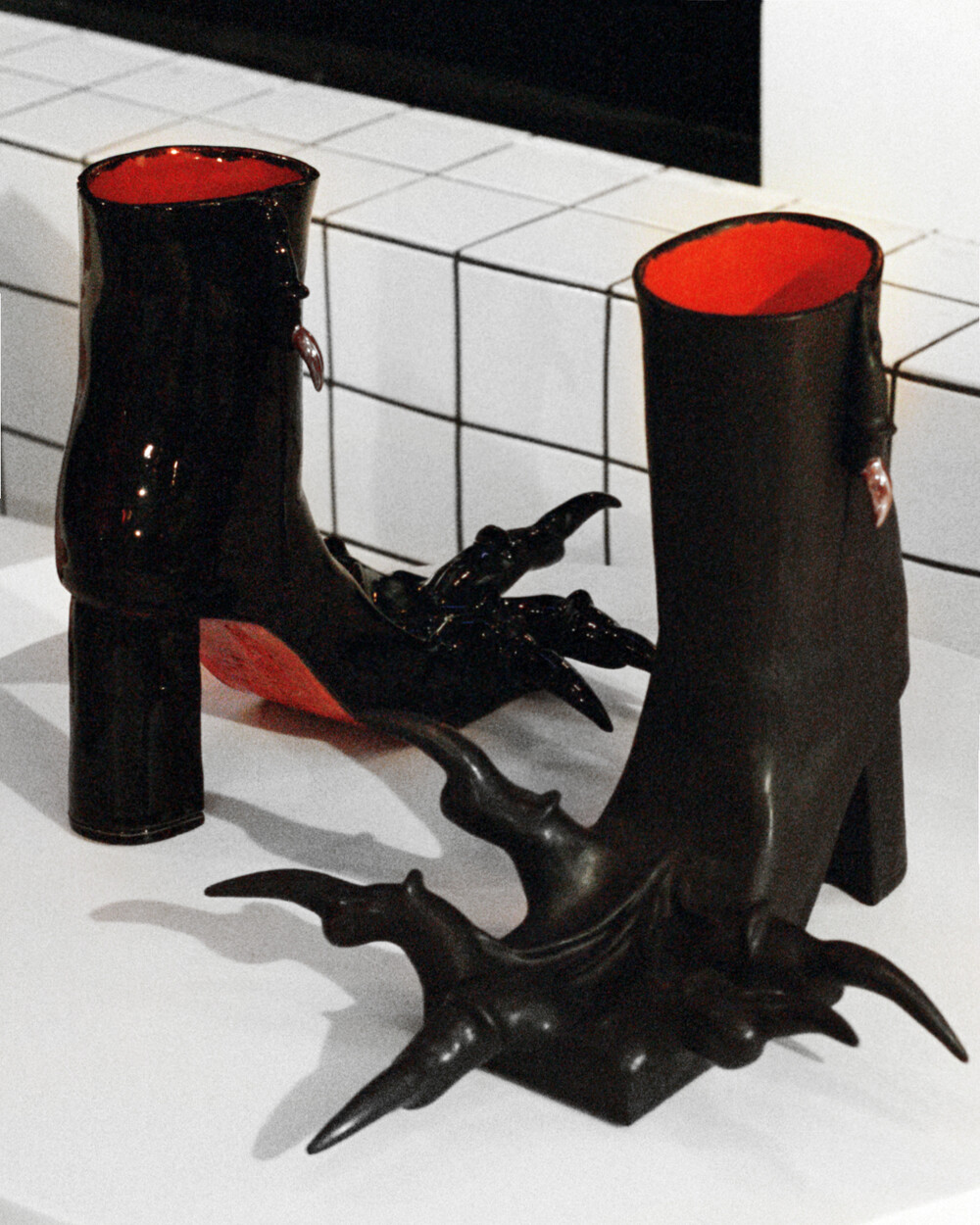
What inspires your practice?
"I'm very inspired by popular culture from a sociological point of view. I first immersed myself in the world of car tuning, the idea of customisation and what it represents. As I delved deeper into the subject and my readings I became interested in the cinematic style of gore and horror. It's a world where raw materials, animal inspirations and the search for textures are impressive."
"I also draw my inspiration from Nordic or Japanese mythology. Between the sublime and the terrifying, I establish a process of hybridisation. And today, I am inspired by the world of fashion. I interpret it from a historical point of view; by studying the connotations objects have."
Do you notice any changes in the practice of ceramics, any innovations?
"We start with techniques that are handmade. For example, I create my pieces from plate techniques or I combine techniques. But when you master the basic techniques you can innovate and improve your practice. It is a medium that allows a lot of research and possibilities."